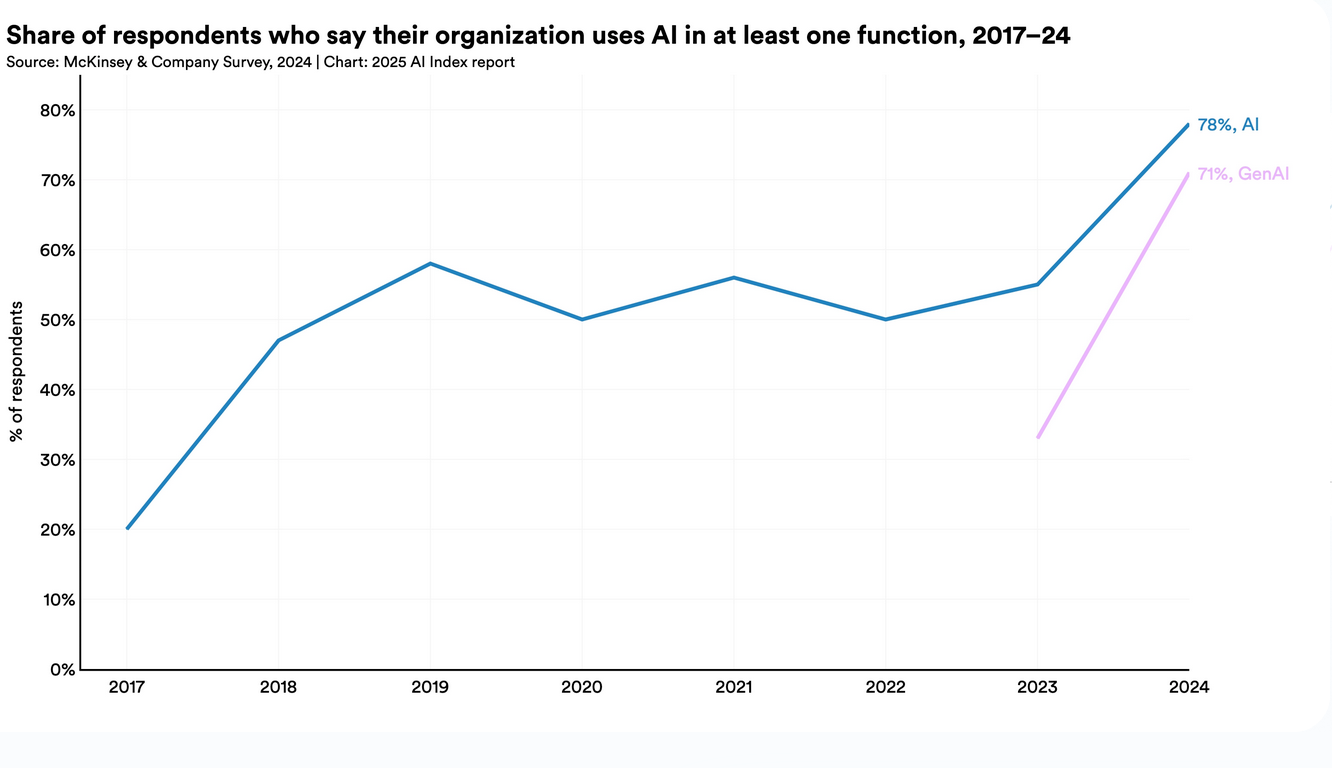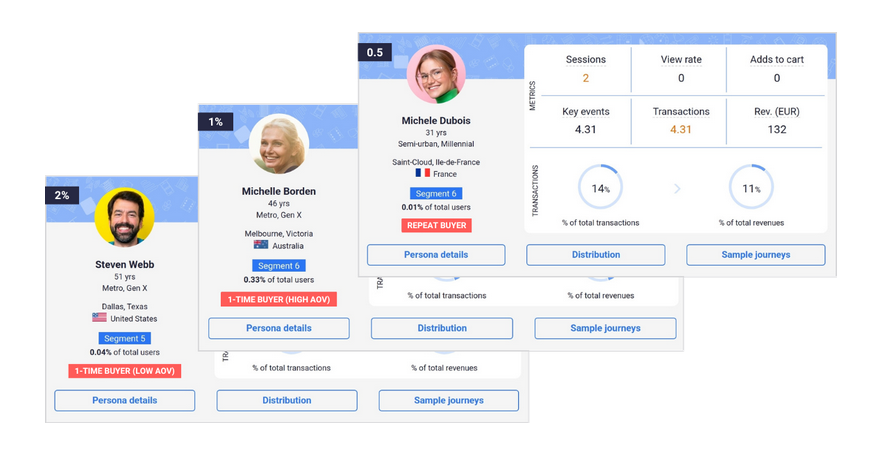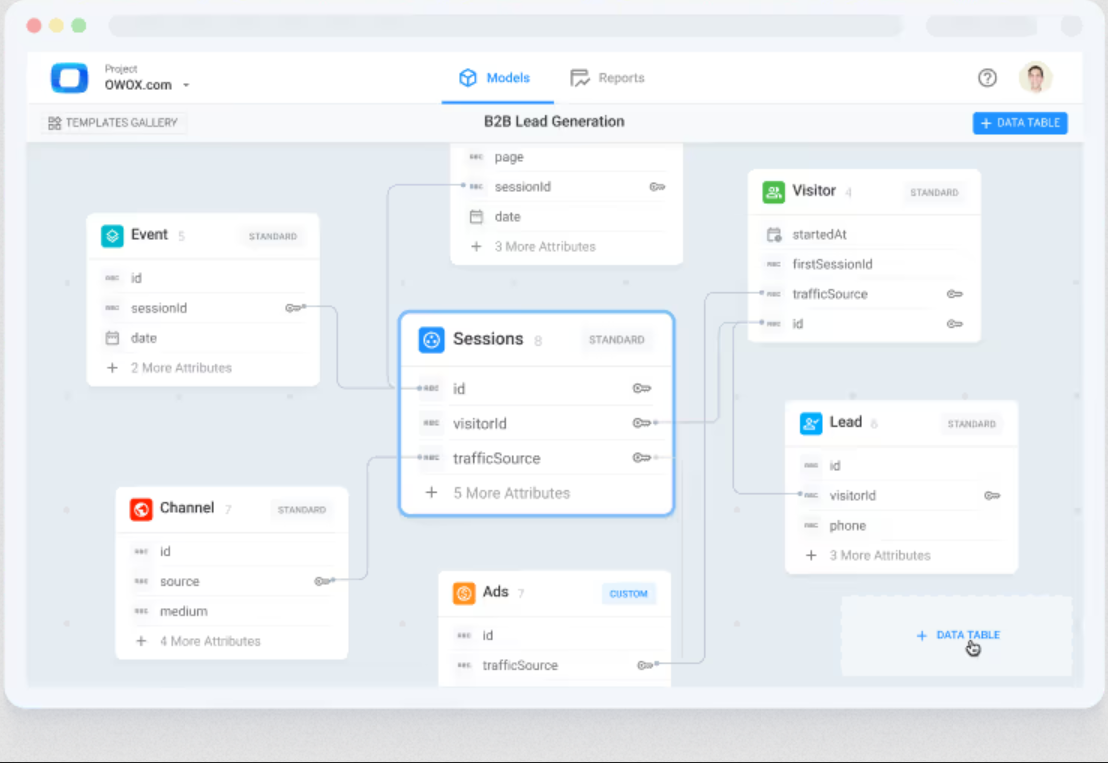Gone are the days of marketing as a high-stakes guessing game. Machine learning now delivers precision in tracking market trends and predicting customer behaviors. Take the algorithm that analyzes every click and scroll to determine the perfect ad for the user or nudge online shoppers with an ideal discount just before they exit.
But what exactly happens behind the scenes? Explore the complex and fascinating web of machine learning, its benefits, and how it can be your weapon for marketing success.
What is Machine Learning?
Machine learning is a field of computer science where algorithms leverage large data sets to autonomously identify patterns and make decisions, without relying on predetermined instructions. This results in a personalized experience where customers feel like brands know exactly what they want.
We encounter the power of machine learning every day, from recommended Netflix shows to predictive texts when you type a message on your phone. Machine learning models are even trained on our past voice commands, enabling virtual assistants to recognize our unique speech patterns and respond accordingly.
With such capabilities, machine learning has become a pivotal and invaluable tool for marketing professionals, empowering them to deliver highly personalized experiences and achieve their KPIs more easily.
Machine learning vs. artificial intelligence
All machine learning is AI, but not all AI is machine learning.
Machine learning is a specific branch of artificial intelligence (AI) encompassing many technologies. It is characterized by its ability to learn and improve from data without being explicitly programmed.
Benefits of Machine Learning in Digital Marketing
Machine learning opens opportunities for you and your organization—that is, if you know how to harness it well. If you’re still unsure whether it’s the right tool, let’s review the benefits of machine learning you may not want to miss.
1. Efficiency and automation
Machine learning is independent. When you feed it clean, high-quality data, ML algorithms can analyze vast amounts of information and help determine the right message to achieve higher engagement and conversion rates. Additionally, machine learning can automate repetitive tasks, allowing marketers to focus on more strategic priorities.
2. Improved personalization
Machine learning enables marketing teams to optimize campaigns to fit the needs and expectations of several target segments. For instance, contextual advertising uses a content-based approach when displaying ads. Machine learning analyzes content, user behavior, and purchase intent to identify which ad is most relevant to display.
3. Data-driven decisions
Because machine learning can analyze data, identify patterns, and predict results, it helps marketing teams be more confident in implementing data-driven decisions.
4. Real-time optimization
Machine learning can automate many tasks, including tracking trends and behavior in real time. For instance, it can help personalize product recommendations based on who’s currently browsing your website. Machine learning can also prompt marketers to make the necessary adjustments if behavioral data changes.
Machine learning can also automate bidding and content delivery.
Types of Machine Learning in Marketing
Machine learning comes in different types depending on the solution you are looking for. These are supervised, unsupervised, reinforcement, and deep learning.

Deep learning, a subtype of machine learning, uses artificial neural networks to improve personalization. Image via Marketing AI Institute.
Supervised learning
Say you want to train a computer to recognize different types of fruits. You’ll need to feed it images with corresponding fruit labels, like an apple, mango, banana, etc. Once the program has absorbed enough info, it can guess which fruit you’re showing based on what it learned.
This is how supervised learning works.
Supervised learning uses labeled data sets to learn patterns and different outcomes, enabling it to perform tasks. It looks at the input and output to identify the connection between the two datasets. After training, it can predict the output for new inputs it has never seen before. However, it requires a large amount of labeled data and may struggle with new data very different from what it has been trained on.
Supervised learning comes in two categories: classification and regression.
- Classification supervised learning sorts data into groups, like identifying whether an item is an animal or a fruit in a data set. The output is a label or a category.
- Regression supervised learning predicts outcomes based on changing input data. It is used to predict numerical values, such as house prices and stock values.
Unsupervised learning
On the other hand, unsupervised learning requires no human oversight. This independent learning approach lets it find patterns from unlabeled data and infer its rules without instructions.
You can use unsupervised machine learning if you have an online ice cream store and want to understand your customers, but don’t know how to label them. It can crawl through past purchasing histories and cluster customers with similar buying behaviors, age, and gender. This can help you better target your marketing campaigns without painstakingly labeling every customer.
Reinforcement learning
Reinforcement learning tries different actions to see different results and get feedback through punishment or a reward. If you’re running several digital ads, reinforcement learning can determine which versions increase customer engagement and adjust them based on data. The computer program learns what actions lead to the best results through trial and error.
Since reinforcement machine learning trains on experience, it doesn’t require labeled data. It can also optimize long-term rewards, not just immediate results. However, reinforcement learning can take time as it requires multiple trials and errors.
Deep learning
Designed after the human brain, deep learning relies on artificial neural networks to process datasets and perform tasks at a faster rate than a person. It can process far more complex data and extract it without human intervention compared to other subfields of machine learning.
That’s why we see it widely used, from self-driving cars to image recognition searches. Deep-learning-based tools have also become popular in marketing and business analytics for testing, tracking data, and accurately predicting behaviors and industry trends.
Machine Learning Use Cases in Marketing
So, how does machine learning help marketing teams in the real world?

AI adoption continues to grow across organizations. Image via Stanford
Customer insights and retention
Retaining customers is as important as acquiring new ones. Machine learning has proven beneficial in increasing customer retention by gathering and analyzing customer insights in real-time. This allows businesses to identify high-priority challenges early and focus on keeping customers engaged.
Take Amazon. With thousands of products in its inventory, catering to millions of customers worldwide, it isn’t easy to manually keep tabs on each one. But machine learning-powered features make this a possibility. Amazon leverages ML in its product recommendations by analyzing user behavior to suggest products customers may want. This personalized experience rewards loyal customers and encourages them to keep purchasing.
Campaign optimization
The success of a campaign is no longer hinged on as many people in your target segment as possible. With the rising demand for a unique experience, marketing campaigns must hyper-personalize from the first brand touch point for every high-value or potential customer.
Using data-backed marketing strategies, machine learning enables brands to reach out to people who are more likely to become customers. Machine learning then generates the version of an ad or other campaign efforts that best resonates with the target audience.
Machine learning is also leveraged in advertising campaigns to adjust bids in real-time based on changing factors, like competition and the likelihood of a conversion. This ensures your campaign investments are worth every penny because you can expect a higher ROI with the help of machine learning.
Customer experience and engagement
Designing user experiences and ensuring that every engagement propels customers forward in their journey can be time-consuming and require significant effort. But machine learning can fast-track some tasks, allowing marketing teams to deliver beyond expectations and achieve customer satisfaction.
AI-powered CRM tools enable marketers to analyze and predict customer behavior in real time. If there are red flags that may suggest a customer is about to disengage, machine learning can identify the right content, message, or promotion to make them stay.
Machine learning also improves customer service by enabling brands to respond faster to common queries or FAQs through automation. These efforts enhance customer experience and boost customer interactions.
AI and Machine Learning Tools for Marketing
There are dozens of AI tools, from free to paid. But deciding which one to use can be confusing. We have rounded up the best AI and ML tools that many marketing professionals swear by.
Popular AI and ML tools
If you’re looking for AI and ML platforms that can do complex data analysis, automated data categorization, and trend detection, then you may want to consider the following tools:
- Delve AI: Conduct deep market research, audience segmentation, and competitor benchmarking with its AI-driven data analysis, automated report generation, and pattern recognition capabilities.
- Predictive analytics: Forecast customer churn rate, sales, and campaign outcome with accurate precision, thanks to its machine learning features.

E-commerce buyer personas generated via Delve AI
For a more comprehensive, all-in-one marketing, research, and productivity tool, have a look below:
- Brandwatch: Tracks customer feedback, sentiment, and perception on social media. It also runs competitor analysis by using machine learning to comb through large data sets for market trends and consumer behaviors.
- HubSpot: Takes charge of your email marketing, content management, and sales automation tasks. HubSpot has AI-powered CRM, lead scoring, and predictive analytics tools, too.
- Zapier: Easily integrate other marketing apps for seamless workflow. Machine learning optimizes task automation and triggers based on user behavior.

Smart CRM features via HubSpot
Business intelligence AI/ML tools
Dig deeper, get more insights, and level up your market research with these business intelligence tools.
- OWOX BI machine learning: Helps marketers by streamlining all relevant data in one place for better decision-making. This is done by automating the import of marketing data from digital platforms like social media and providing reports for real-time insights.
- Domo: It uses Machine Learning to analyze data and improve marketing strategies. It also offered beginner-friendly tools to track marketing performance and warn if key metrics drop.
- Microsoft power BI: Offers advanced AI and ML tools for anomaly detection, sentiment analysis, and key influencers. And with the help of natural language processing, Power BI helps marketers find answers from data by typing simple questions.

Marketing B2B Lead Generation workflow via OWOX BI
Other leading platforms
- Canva: AI design features automate visual creation tasks, enabling even non-designers to produce eye-catching content for ads, social media, email marketing, and more.
- Google Ads: It automates bids to get the best results through Smart Bidding. It also helps create ads that fit different spaces, target specific audiences, and predict ad success.
- Notion AI: It boosts productivity for marketing teams using task automation, smart templates, and collaboration tools.
Pros and Cons of AI & Machine Learning in Marketing
AI and machine learning tools are considered a double-edged sword. While they can help your marketing team, they can do the opposite if you don’t know how to utilize them properly. Let’s go over its pros and cons.
Benefits and opportunities
1. Higher accuracy in predicting trends
Machine learning and other AI subfields can process large datasets faster than humans. They can also spot changes in trends and hidden opportunities, helping marketing teams stay ahead.
2. Testing creativity safely
AI can examine thousands of people’s reactions to different ads. Because AI learns from real customer behavior, it can quickly test ads and other creative ideas to see if they work without wasting time or money. This process is called AI-powered creativity testing.
Marketers can avoid unnecessary risks and ensure every output meets the criteria before launching it to the public.
3. Ensures consistent brand identity across all campaigns and marketing efforts
Managing marketing campaigns can be complex, especially if you're building presence on several channels. This makes it difficult to ensure alignment between brand identity and business goals.
AI and machine learning analyze past marketing materials to understand the brand identity, including style and personality, and help tailor content that perfectly matches the brand.
Risks and limitations
Now, what are the challenges when using machine learning in marketing?
1. Biased data results in biased analysis
AI tools are only as good as the data they are fed. If they receive erroneous or skewed information, their predictions and analyses will be inaccurate. This is because AI heavily relies on the input data when identifying patterns and trends.
For instance, if the dataset given focuses predominantly on men, even if the campaign's target audience is a mix of both genders, it might discriminate against women without anyone intending it. This is why it is crucial to carefully check AI systems and data to flag biases early and avoid worsening existing problems.
2. High setup costs
AI and machine learning systems can be expensive, depending on the features you’ll need.
While starter packages cost less than $100 a month, customized AI and machine learning systems with complex features can push this to tens of thousands a month. There are also ongoing expenses, like storage, maintenance, and security. So, start small, prioritize the solutions you need, and scale up once you see a significant return on investment.
But if you want to customize machine learning systems from the ground up, it is best to work with one of the top app development companies specializing in AI so your money doesn’t go to waste.
3. Risk of over-reliance on AI
Over-reliance on AI can lead to generic marketing, making brands sound alike. AI also risks copyright violations by copying creative content without permission from its rightful owners. While AI boosts efficiency, it should only complement rather than replace human creativity and judgment to maintain brand trust and uniqueness.
Boost Your Marketing Strategies with Machine Learning
Machine learning and other AI technologies continue to shape modern marketing. They enable marketers to leverage data-driven insights and intelligent automation to create unique and memorable experiences, optimize real-time campaigns, and confidently make strategic decisions. In fact, a recent survey reveals that over 56% of companies use AI in marketing.
As customer expectations and industry trends change quickly, marketers must catch up. And machine learning can be the perfect tool to do just that. With a deep understanding and the right team, investing in machine learning can yield positive returns by enabling brands to stay competitive, build customer relationships and loyalty, and propel their marketing strategies to greater heights.
Work with a brand strategy firm to get started.
Oct 22, 2025
